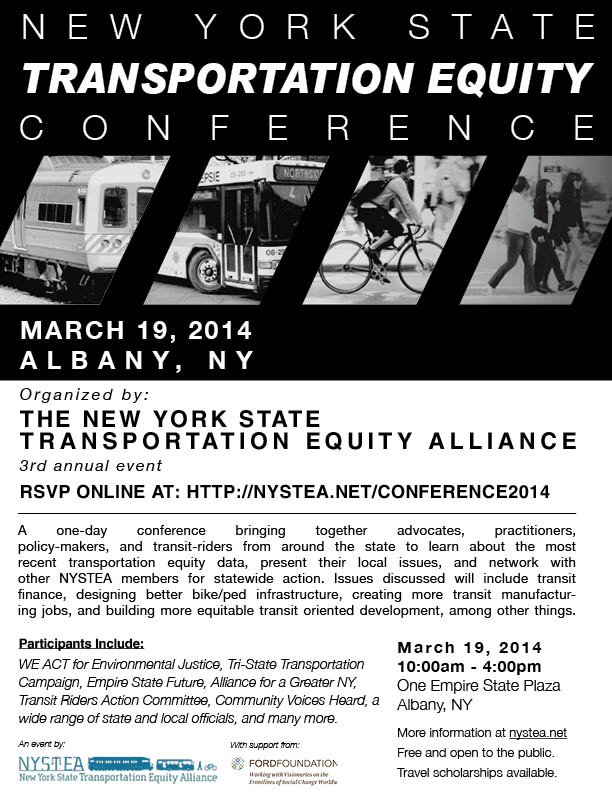On February 3rd, NYSTEA will be in Albany to participate in Transit Awareness Day. The entire day will feature a transit rally, discussions with policy makers, a legislative reception, and transit information displays in The Well of Legislative Office Building (LOB). NYSTEA is pleased to once again partner with the New York Public Transportation Association (NYPTA), as well as several transit unions throughout the state to come together and present a unified voice to communicate the importance of a strong state investment in public transportation.
SCHEDULE OF EVENTS
Tuesday, February 3
11am-6:30pm Transit Means Business Display (The Well)
12pm Invest in Transit! Rally (The Well)
1-4pm Film Festival (The Well)
1-4:30pm Legislative Appointments
4:30-6:30pm Legislative Presentation & Reception (The Well)
To learn more and register for the event, click here.
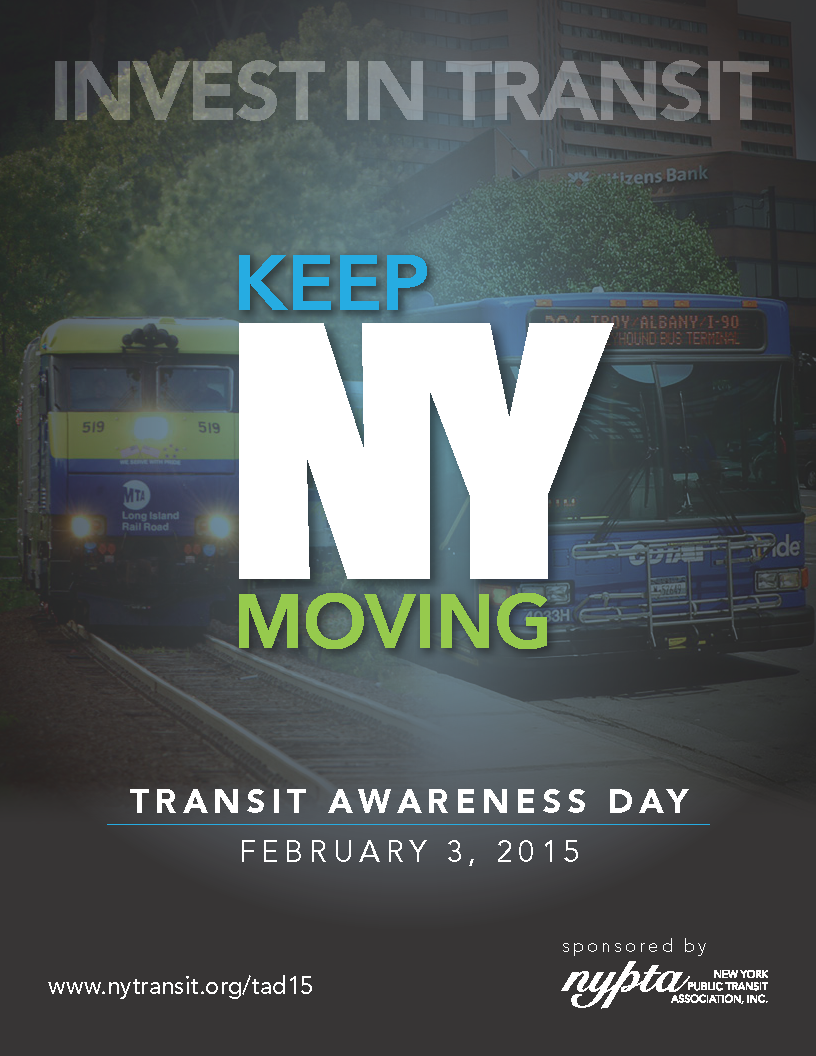
The following content was originally posted by NYSTEA coalition member, the Tri-State Transportation Campaign
Written by: Nadine Lemmon, New York and Federal Policy Coordinator at TSTC

NYPTA’s New Report Identifies $1 billion in capital needs for non-MTA transit
Yesterday, the New York Public Transit Association (NYPTA) released their report “Five Year Capital Program for Upstate and Downstate Transit” which outlines the critical capital investment needs for non-MTA urban transit systems across the state. While the MTA first issued a multi-year capital program more than 30 years ago, NYPTA’s report represents the first ever comprehensive attempt to develop a five-year capital plan for New York’s non-MTA systems.
And the need is substantial. There are more than 100 systems covering nearly every county in the state, and carrying over 550,000 passengers each and every day. Yet, the projected capital deficit is $577 million. Making matters worse, these system are using capital funds for operations, accelerating the wear and tear on facilities and equipment. The lack of capital investment and dedicated capital and operating funding streams over the years has led to outdated systems that break down, disrupt service and incur higher costs when transit providers attempt to regain a state of good repair. Unfortunately, existing revenues are projected to cover just 43 percent of these identified capital needs.
The report details $1 billion in upcoming infrastructure needs between 2015-2019, with over 80 percent of the identified need going solely to repair and replace existing core system assets. The remaining 20 percent is slated for expansions and upgrades, such as bus rapid transit, to accommodate record transit ridership—for example, the report notes that ridership is up seven percent in the Capital District.
The $1 billion needed is only for urban and suburban systems in the state and even the report’s list for those systems isn’t comprehensive. For example, in the list of projects, there are notable gaps in the Hudson Valley: no specific improvements have been identified for Rockland County, and no funding is identified for robust implementation of Westchester’s Central Avenue BRT. Also noticeably absent are capital funds for the seven new bus routes proposed in the Mass Transit Task Force recommendations for the New NY Bridge, despite the promise the system will launch in 2018, which falls within NYPTA’s five-year window. Suffolk County’s proposed BRT route along Nicolls Roads/Route 110 in Suffolk County needs $40 million. A footnote in the report states that NYPTA intends to work with NYSDOT in order to identify the needs of rural, regional and intercity systems that are not included.
The five-year MTA capital planning process is hailed as a key reason the system was able to rebound. Multi-year capital planning—and especially multi-year dedicated funding—are critical to understanding the needs and finding a way to pay for them which then enables short, medium and long-term planning. Manufacturers, suppliers, businesses, and transit operators need this planning reliability in order to make investments. And elected and agency officials need to know the tally in order to decide how to pay for it.
Approximately 63 percent of the funding for upstate and downstate suburban transit comes from federal sources, with some additional capital funds garnered through the state’s annual appropriations process. Unfortunately, as the report points out, there is no regular state capital funding program for non-MTA systems and annual appropriations “are rarely made available to transit systems.” With the prospects for increased funding from federal government looking “dim,” the report calls on the state to take a “leadership role” in finding new revenue sources. While many legislators have encouraged the use of recent one-shot revenue windfalls to help fund infrastructure, this cannot take the place of a mechanism for long-term sustainable funding.
This report is an effective guide to planning for non-MTA systems that have been struggling with the same challenges as the MTA—changing demographics, growing ridership, climate change—but haven’t received commensurate support to tackle them. In NYPTA’s press release, Tri-State’s Executive Director Veronica Vanterpool stated: “While all eyes have been focused on the MTA’s funding gap, little attention has been given to other transit systems struggling to maintain and expand service in suburban, rural, and upstate communities…The demise of these systems is a result of the inherent inequity of state funding formulas and must be addressed with an increase in dedicated streams.”
The NYSTEA Rider Representation campaign seeks to have at least two “rider-representatives” appointed to the governing board’s of the five largest public transportation authorities in NY State. A “rider-representative” is a person that meets the FTA criteria of being transit-dependent, and would hold a position with voting power on their respective Board of Directors.
The NYSTEA coalition believes that the appointment of rider-representatives can support the implementation of equitable transit policies in terms of transit service, capital investments, public outreach, and other methods by which transit agencies serve their constituents, especially those dependent on transit.
To learn more about the Rider Representation campaign view the fact sheets below and visit this page.
PDF versions can be downloaded here.
1. New York State Rider Representation Overview
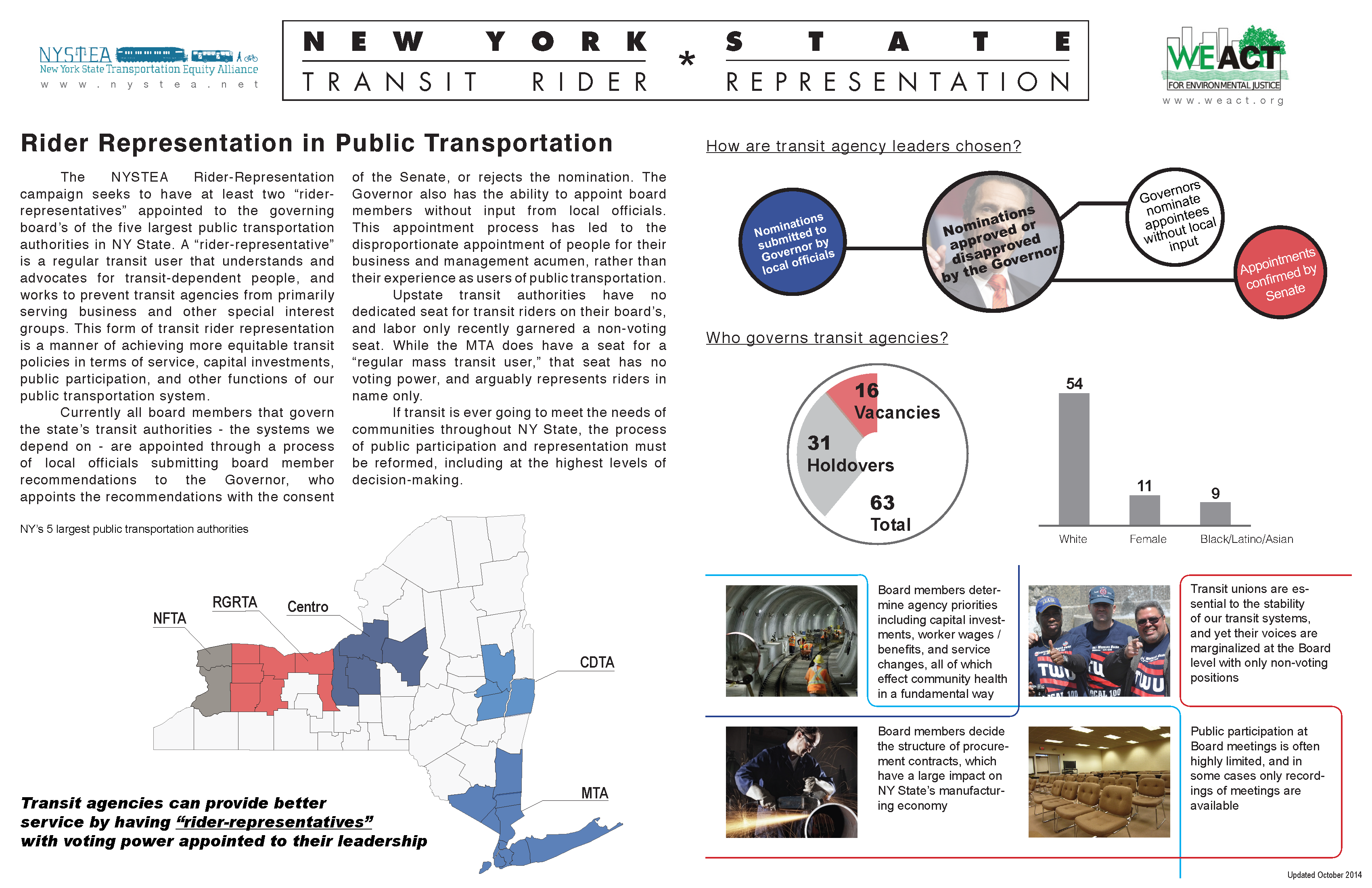
2. Metropolitan Transportation Authority (MTA) – NYC/Downstate region
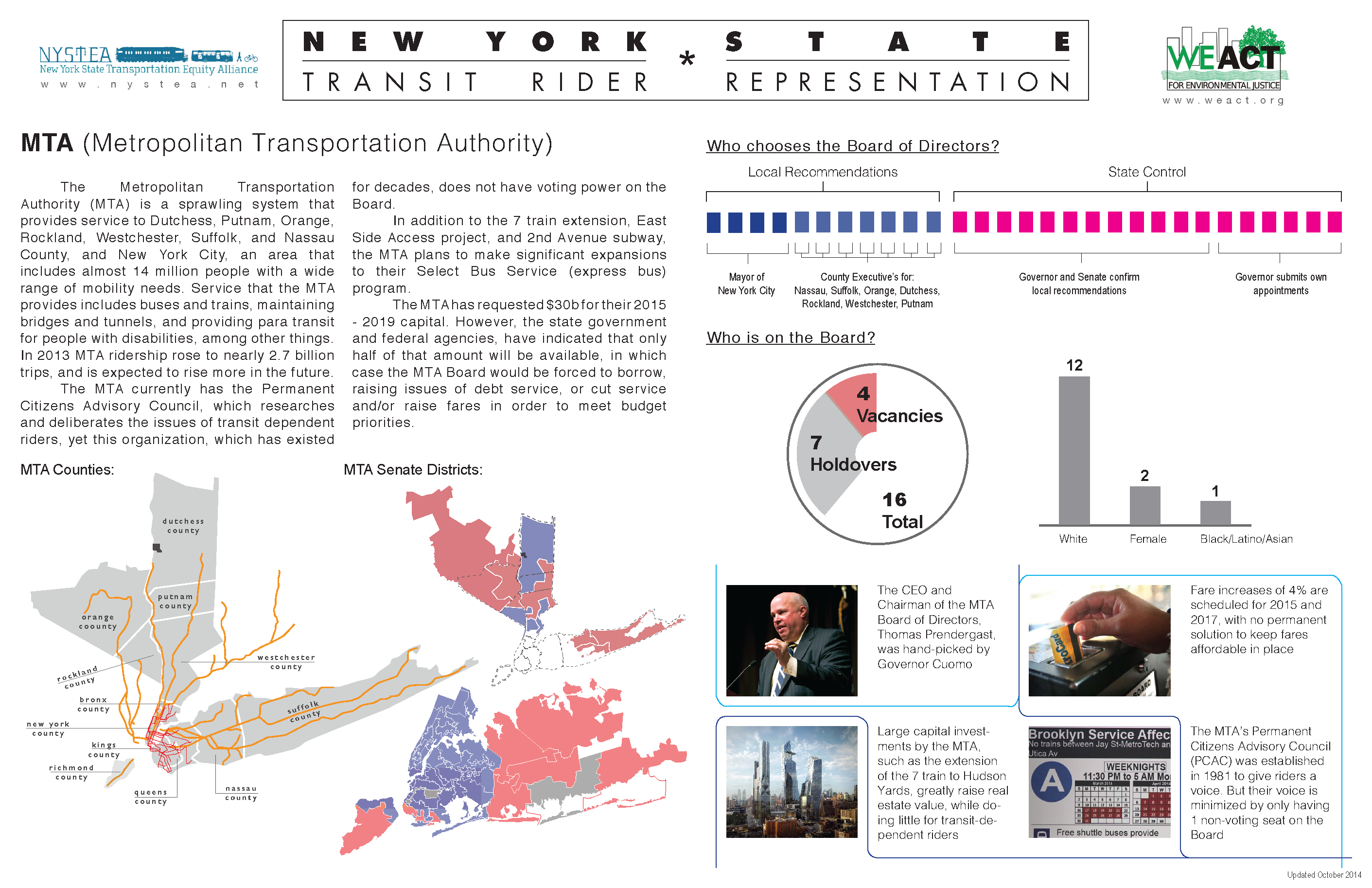
To see more click here.
3. Capital District Transit Authority (CDTA) – Albany region
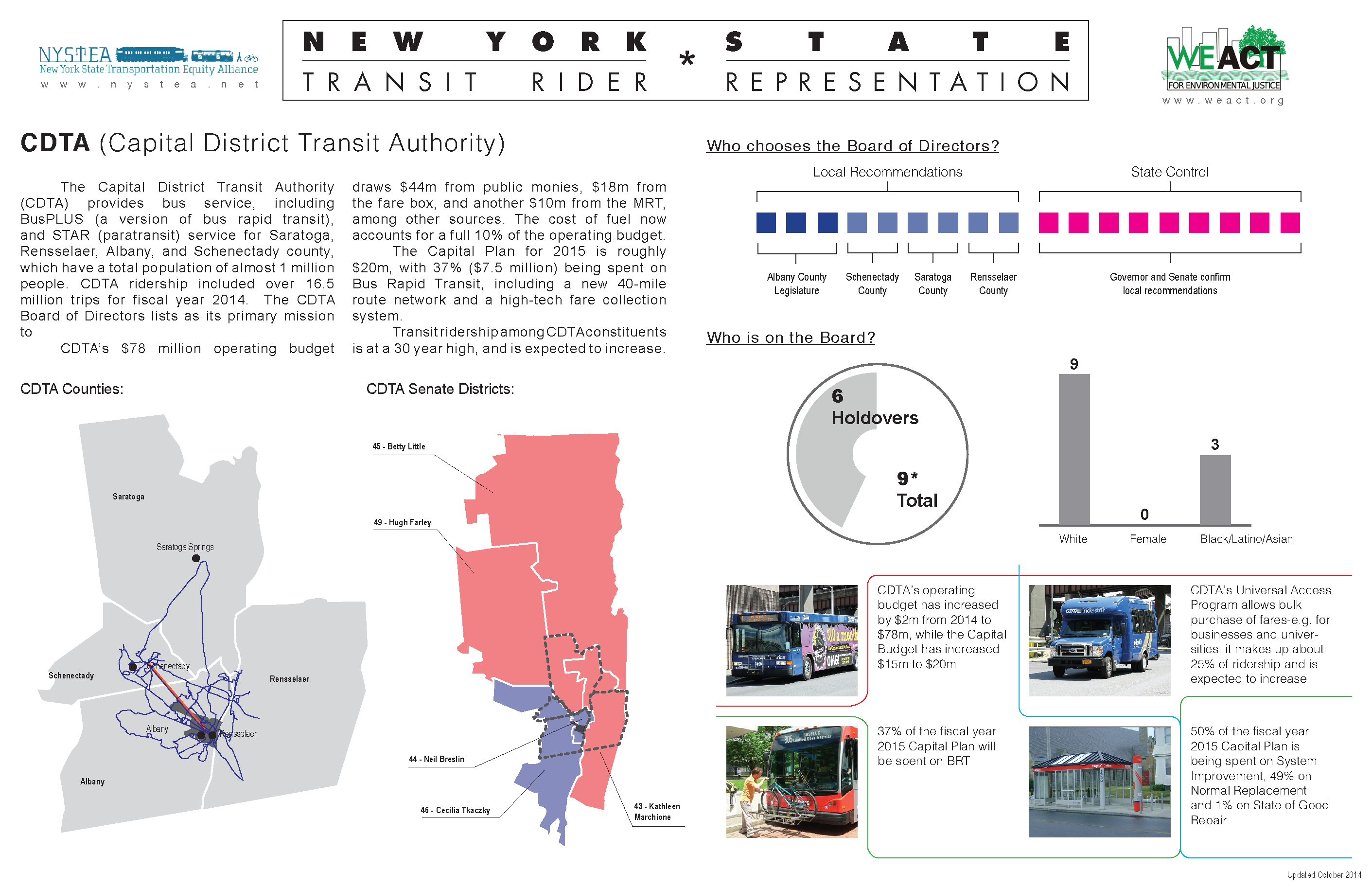
To see more about the CDTA click here.
(more…)
In September of 2014, the NYSTEA coalition submitted a letter to the Mayor of NYC, Bill de Blasio, urging him to include as part of his four recommendations submitted to Governor Cuomo, two rider-representatives for appointment to the MTA Board. The letter was endorsed by over 25 local organizations and 30 city councillors.
To learn more about the Rider Representation campaign click here.
To read the letter and see who has endorsed it view the images below and visit this page.
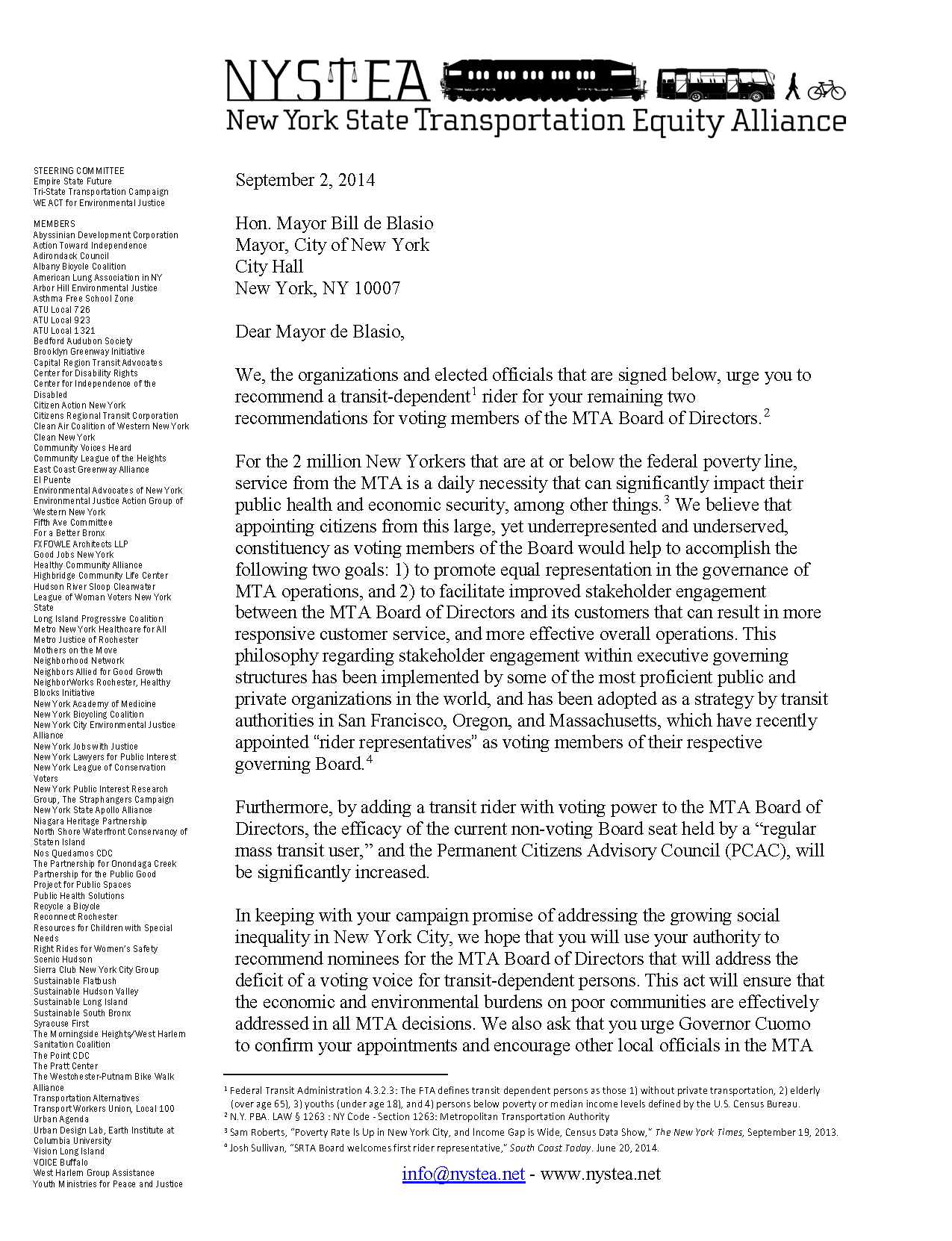
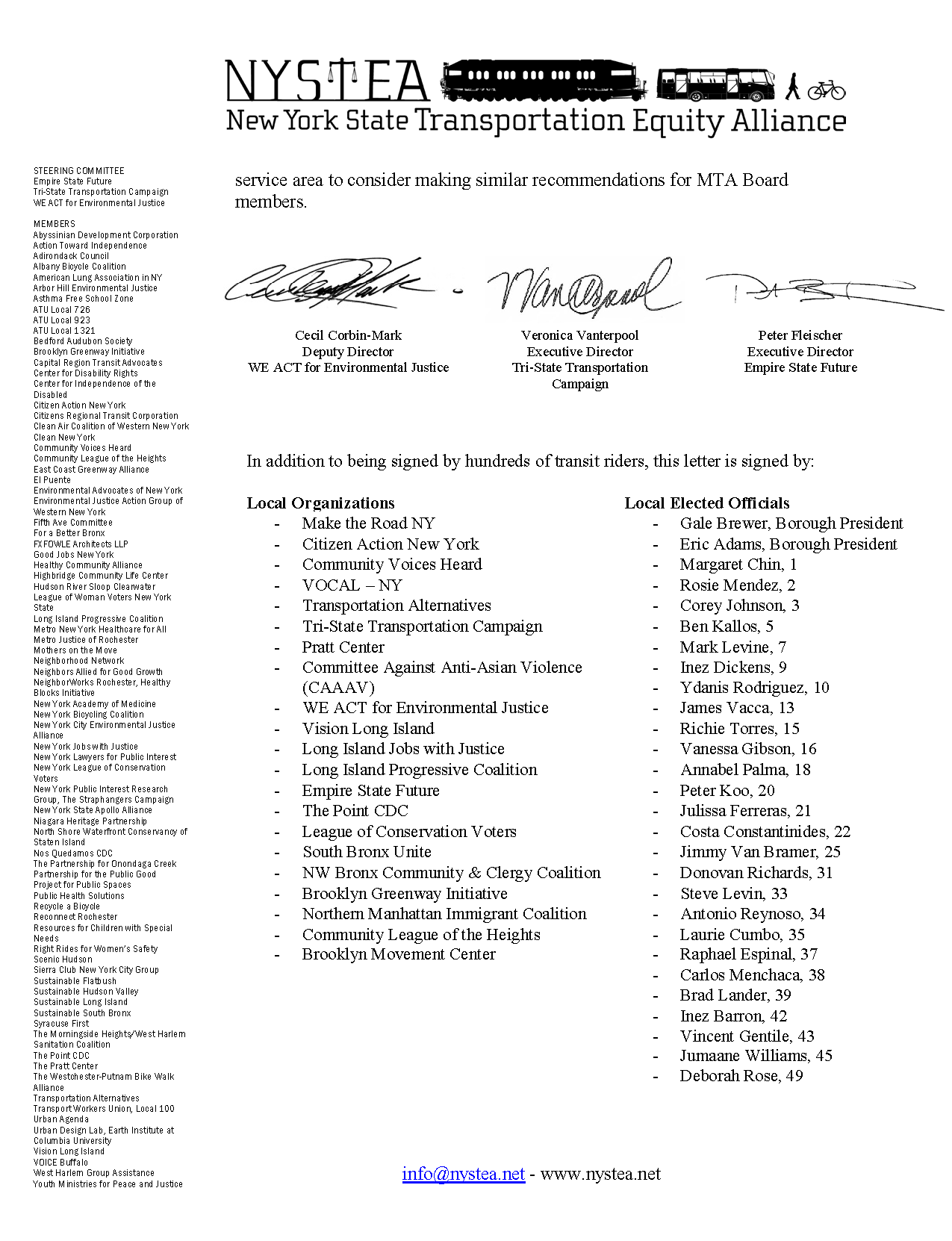




 0 Comments
0 Comments  Print
Print
 Email
Email






